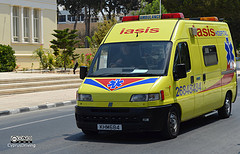 Many travelers want to know how to accurately assess their travel medical needs. Below are the steps you should follow to assess your needs, then make the right travel medical insurance purchase.
Many travelers want to know how to accurately assess their travel medical needs. Below are the steps you should follow to assess your needs, then make the right travel medical insurance purchase.
Start by doing an accurate assessment:
- Examine your current medical insurance plan. Check whether travel medical insurance is available with that plan and find out if that travel medical coverage is primary or secondary. In most cases, your health insurance plan is primary at home and, if travel medical coverage is available, it is secondary outside the country. That means you will have to pay for your medical costs when you travel and apply for reimbursement after. See our page on understanding primary vs. secondary medical coverage for more information.
- Determine your medical transportation coverage. In most cases, your need for transportation back home is covered through emergency ambulance services, but medical transport and medical treatment are two distinct sections of a travel medical plan, so you’ll need to look for both. The costs for emergency medical transportation can be quite high, and if you don’t have coverage, you’ll have to foot the bill yourself. See this story on one traveler who encountered a horrific situation on a vacation to Mexico. If you’re taking a Mediterranean cruise or a trip to China, your emergency transportation costs could run into the tens or hundreds of thousands, depending on the situation.
- Rate your own health. If you have a pre-existing medical condition, such as heart disease or diabetes, then traveling without travel medical coverage and failing to get a pre-existing medical condition waiver is a recipe for disaster. Even if you’re very healthy, if you’ve visited a doctor in the past 180 days, you should be careful that a recurrence of the condition that caused you to see the doctor won’t reemerge because that situation won’t be covered by your travel medical insurance.
- Determine your travel activities and relative risks. If you plan to bungee jump off a bridge on your trip, then you will want to be sure that you have a waiver for high adventure activities with your travel insurance plan. Most travel insurance plans specifically exclude activities like hang gliding, skiing, parasailing, whitewater rafting, and more, but purchasing either an adventure travel insurance plan or a plan with a waiver for adventure activities will provide the coverage you need.
Then, purchase a plan to cover those needs:
- If you want your travel medical plan to pay the hospital and medical facilities directly, then you’ll want to be sure that your travel insurance plan offers primary medical coverage.
- If you want protection for emergency medical transportation, then you’ll want to think about how far you will have to travel to get back home and have enough coverage. Remember, with a travel insurance plan, you’ll have coverage for medical transport to an appropriate medical facility and also back home after you’ve adequately recovered.
- Depending on your current health, you’ll want to purchase coverage that will cover your medical costs if you experience the recurrence of a pre-existing medical condition. Any condition for which you’ve sought treatment in the past few months can be considered a pre-existing condition.
- Depending on your current health, you’ll choose a travel medical plan with enough coverage for the risks you are taking
